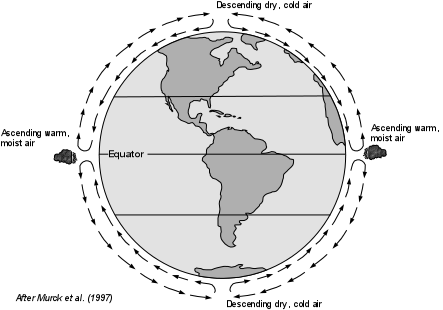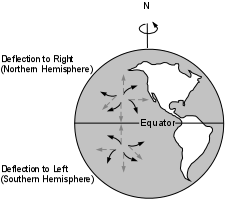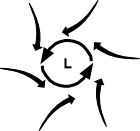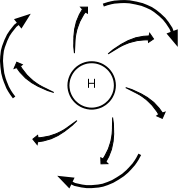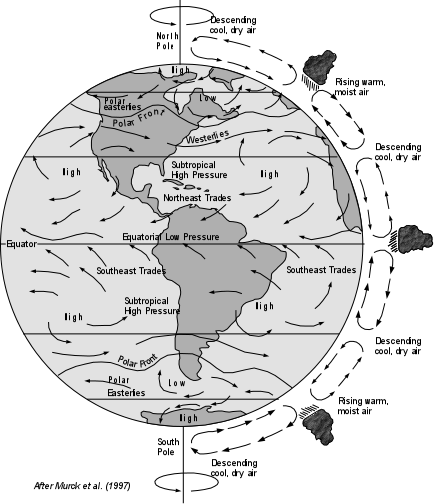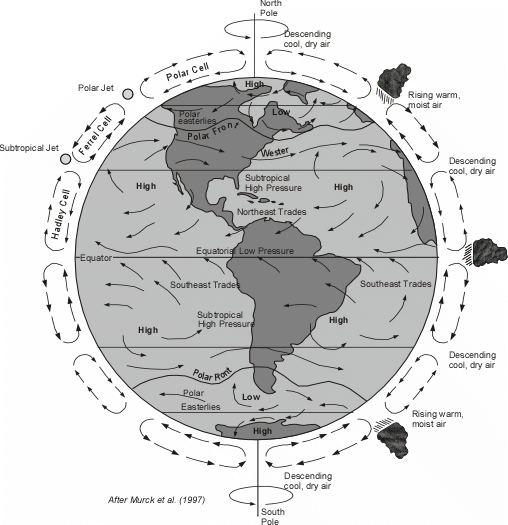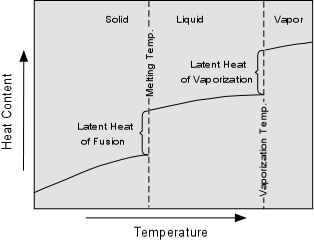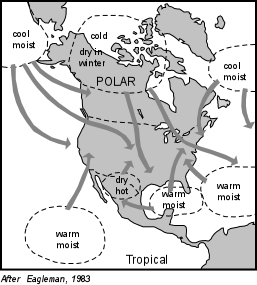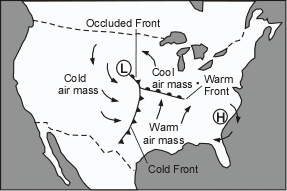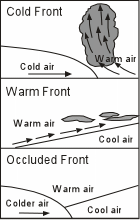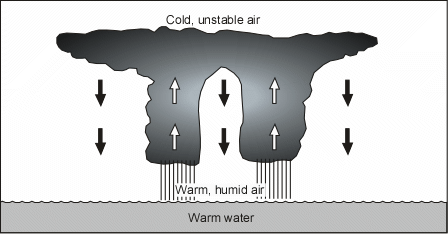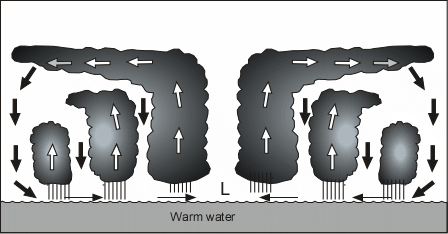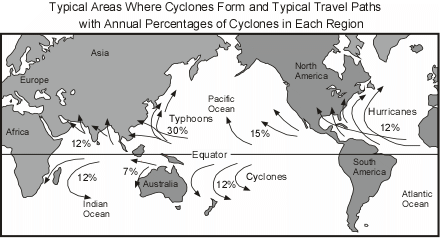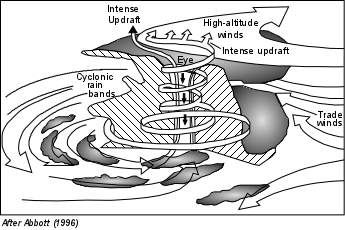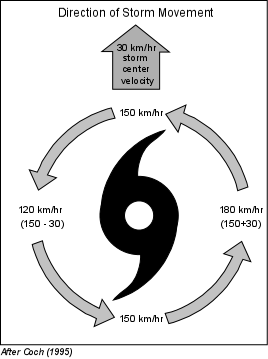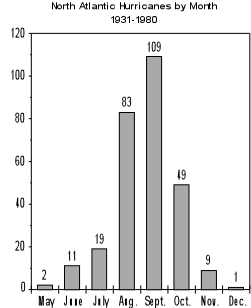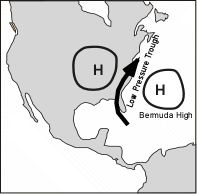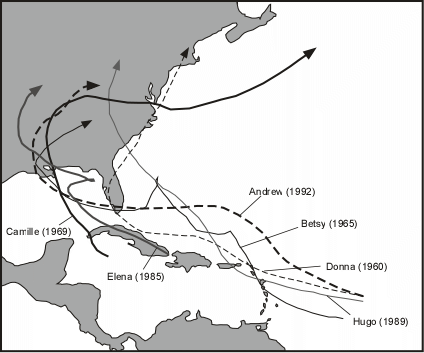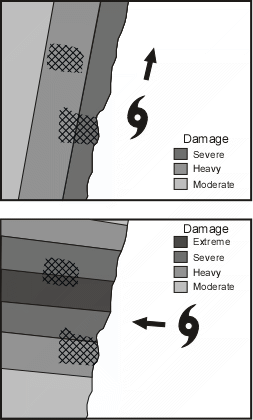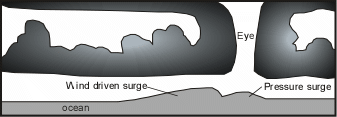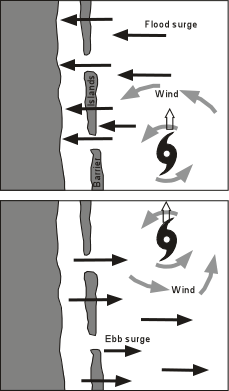| Some progress has been made in predicting the number and intensity of storms for the
Atlantic Ocean by Dr. William Gray of Colorado State University. He has shown that
there is a correlation between the frequency of intense Atlantic hurricanes with the
amount of rainfall in western Africa in the preceding year. This correlation has allowed
fairly accurate forecasts of the number of storms of a given intensity that will form each
year. The 1997 predictions, however, did not take into account the effects of El
Niņo, which reduces the number of hurricanes. Nevertheless, Dr. Gray's predictions are
closely watched, and have been otherwise fairly accurate.
Reducing Hurricane
Damage
There is plenty of historical data on hurricane damage in the United States so
that it is not difficult to see ways that damage from hurricanes can be reduced. In
terms of protection of human life, the best possible solution is to evacuate areas before
a hurricane and its associated storm surge reaches coastal areas. Other measures can be
undertaken to reduce hurricane damage as well.
- Warning and Evacuation - With modern techniques of forecasting and tracking hurricane
paths, it is always possible to issue warnings about the probable locations that will be
affected by any given hurricane. The National Hurricane Center defines hurricane
watches and warnings as follows:
- Hurricane Watch: An announcement of specific coastal areas that a hurricane or an
incipient hurricane condition poses a possible threat, generally within 36 hours.
- Hurricane Warning: A warning that sustained winds of 74 mph (119 km/hr) or higher
associated with a hurricane are expected in a specified coastal area in 24 hours or
less. A hurricane warning can remain in effect when dangerously high water or a
combination of dangerously high water and exceptionally high waves continue, even though
winds may be less than hurricane force.
The problem, however, is that it may not always be possible to issue such a warning in
time for adequate evacuation of these areas. Because the storm surge and even gale
force winds can reach an area many hours before the center of the storm, warnings must be
issued long enough before the storm strikes that the surge and winds do not hinder the
evacuation process. The effectiveness of the warning systems also depends on the
populace to heed the warning and evacuate the area rather than ride out the storm, and the
state of preparedness of local government agencies in terms of evacuation and disaster
planning. New Orleans is a particularly notable example. Since most of the
city is at or below sea level, a storm surge of 6 meters (20 feet) from a category 4 or 5
hurricane would most certainly flood the city and choke all evacuation routes. Even
with 24 hours notice of the approaching surge (which would mean as soon as the storm
entered the Gulf of Mexico) it would be difficult to evacuate or convince people to
evacuate within that 24 hour period. A hurricane approaching New Orleans
was a disaster waiting to happen as we can all testify.
- Maintaining Beach Width and Dune Height - Wide beaches, high dunes, and barrier islands
offer natural protection from storm surges. If beach width and dune height can be
maintained or increased by artificial processes, this could prevent some damage to
structures lying inland from the beaches and dunes.
- In Louisiana, restoring coastal marshes and land lost to recent
erosion could reduce the storm surge that reaches populated parts of the
region (like New Orleans).
- Engineering Solutions - In 1900 the city of Galveston Texas was completely covered by
the storm surge of an approaching hurricane. Between 6,000 and 8,000 lives were
lost. Because of this devastation the entire city was elevated by 11 feet and a
floodwall 16 feet above low tide was constructed all along the coast. These
engineering steps protected Galveston until 2008 and probably reduced damage due to Hurricane Ike in 2008. Still, Galveston was not spared by Ike. Another approach, for cities on bays
and estuaries is to build a moveable series of walls or gates across the mouth of the bay
or estuary to prevent the storm surge from entering. Such a structure was built
across the mouth of Narragansett Bay, Rhode Island to protect the city of Providence after
a 1938 hurricane. Again the structure has proven effective.
- Construction Codes - Rigorous enforcement of building codes can effectively reduce
damage to structures. In areas where high storm surges might be expected, codes
could require construction that is built high enough to not flood and sturdy enough not to
be knocked down by the surge or the winds that accompany a hurricane. Damage to
homes can be reduced by requiring aerodynamic architecture, such as rounded rather than
angular shapes. Wood frame home construction should require that each component of a
house - foundation, floors, walls, and roof - be anchored to the others with metal
strips (hurricane clips) rather than just nailed together.
- Zoning/Land Use Practices - As with other natural hazards like
flooding, landslides, and coastal erosion, an alternative, although controversial practice
of limiting coastal areas to recreational purposes could always reduce the vulnerability
of such areas to damage from natural processes, including hurricanes.
|
